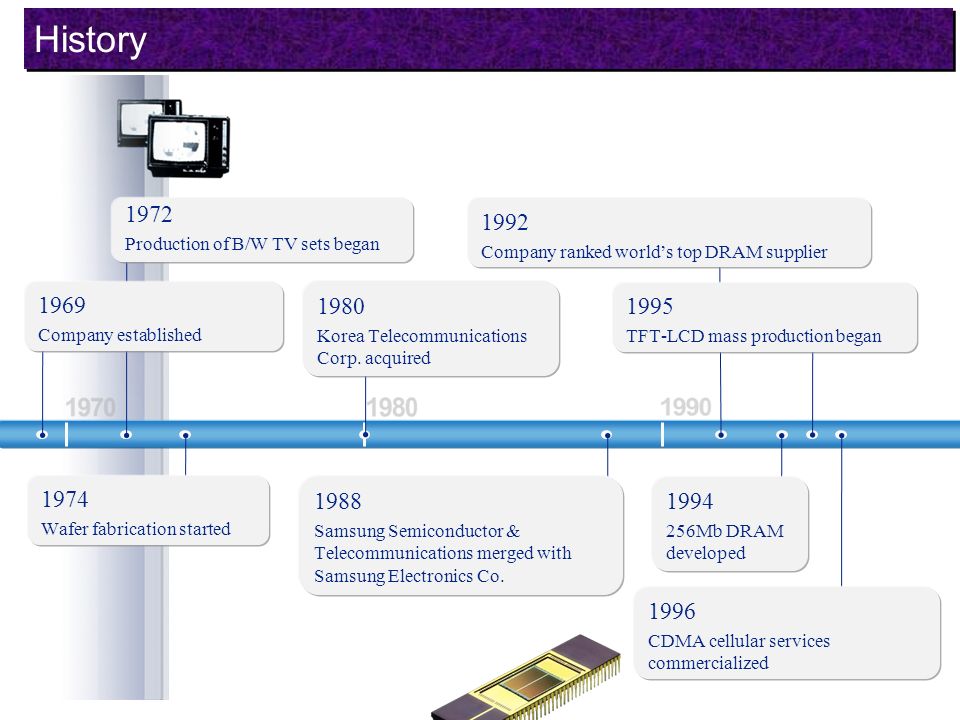Samsung Electronics is a South Korean conglomerate that is one of the world’s top manufacturers of electrical equipment. Samsung is a leading manufacturer of consumer and industrial electronics, including appliances, digital media devices, semiconductors, memory chips, and integrated systems.
It has become one of the most well-known names in technology, accounting for around one-fifth of South Korea’s overall exports.
History of Samsung Electronics- How it started and early days?
Lee Byung-Chull launched Samsung on March 1, 1938, as a grocery trading company. He began his company in Taegu, Korea, trading noodles and other local commodities and exporting them to China and its regions. (The name Samsung is derived from the Korean for “three stars.”) Following the Korean War, Lee extended his firm into textiles, becoming Korea’s largest woollen plant. He placed a strong emphasis on industry in order to assist his country in redeveloping after the war. During that time, his company profited from the Korean government’s new protectionist policies, which aimed to promote major domestic conglomerates (chaebol) by protecting them from competition and providing them with cheap financing. In the late 1950s, the corporation purchased three of Korea’s leading commercial banks, as well as an insurance company and cement and fertiliser manufacturing enterprises. In the 1960s, Samsung purchased other insurance firms, as well as an oil refinery, a nylon manufacturer, and a department store.
To compete in the textile market, the company developed its textile-manufacturing methods throughout the 1970s to include the entire line of production—from raw materials to finished product. New subsidiaries were formed, including Samsung Heavy Industries, Samsung Shipbuilding, and Samsung Precision Company (Samsung Techwin). During the same time period, the firm began to invest in the heavy, chemical, and petrochemical sectors, which provided the company with a potential development path.
Entry into electronics
Samsung began the electronics sector with many electronics-focused subsidiaries in 1969. Black-and-white televisions were their debut offerings. During the 1970s, the business began exporting home electronics devices to other countries. At the time, Samsung was already a prominent manufacturer in Korea, with a 50% share in Korea Semiconductor.
Samsung’s industries expanded rapidly in the late 1970s and early 1980s. Separate semiconductor and electronics businesses were developed, and an aircraft division was founded in 1978. Samsung Data Systems (now Samsung SDS) was founded in 1985 to meet the rising need for system development in enterprises. This aided Samsung’s rapid rise to the top of the information technology services industry. Samsung also established two research and development centres, which expanded the company’s technological portfolio to include electronics, semiconductors, high-polymer chemicals, genetic engineering tools, telecommunications, aircraft, and nanotechnology.

Samsung on the way to become international behemoth
Lee Byung-Chull died in 1987, and his son Lee Kun-Hee replaced him. Samsung was divided into five firms; electronics remained under Lee Kun-supervision, Hee’s while the other four were handled by Lee Byung-other Chull’s sons and daughters.
Lee Kun-Hee said that Samsung had grown comfortable as a result of its dominance in the South Korean economy and was unprepared for global competition. “Change everything except your wife and kids,” he famously told Samsung executives. Samsung insisted on subordinates reporting problems to their managers under what Lee referred to as a “new management” paradigm. It also emphasised product quality over quantity, promoted women to high leadership positions, and opposed bureaucratic processes.
In the 1990s, the business continued its development into worldwide electronics markets, fueled by Lee Kun-cultural Hee’s transformation. Despite its success, those years saw the business embroiled in corporate scandals, including various patent-infringement actions and bribery trials. (In one such case, Lee Kun-Hee was convicted of bribing former President Roh Tae-Woo in 1996.) He was condemned to two years in jail, which the court mitigated and which he was pardoned in 1997.)
Nonetheless, the corporation continued to make technological and product-quality advancements, with a number of its technology products—ranging from semiconductors to computer monitors and LCD screens—climbing into the top five in worldwide market share.
Also Read: Apple And The Strategies That Made It A Synonym Of Innovation And Success
Birth of Samsung’s Galaxy Series
The 2000s saw the introduction of Samsung’s Galaxy smartphone series, which swiftly became not just the company’s most-praised devices but also among the world’s best-selling smartphones. Samsung also supplied microprocessors for Apple’s first iPhone models and was one of the world’s largest microprocessor producers in the late twentieth and early twenty-first centuries.
Since 2006, the firm has been the world’s best-selling television manufacturer. The Galaxy series extended to tablet computers with the release of the Galaxy Tab in 2010, and to smartwatches with the introduction of the Galaxy Gear in 2013. In 2019, Samsung released the Galaxy Fold, a foldable smartphone.
To read more content like this, subscribe to our newsletter



